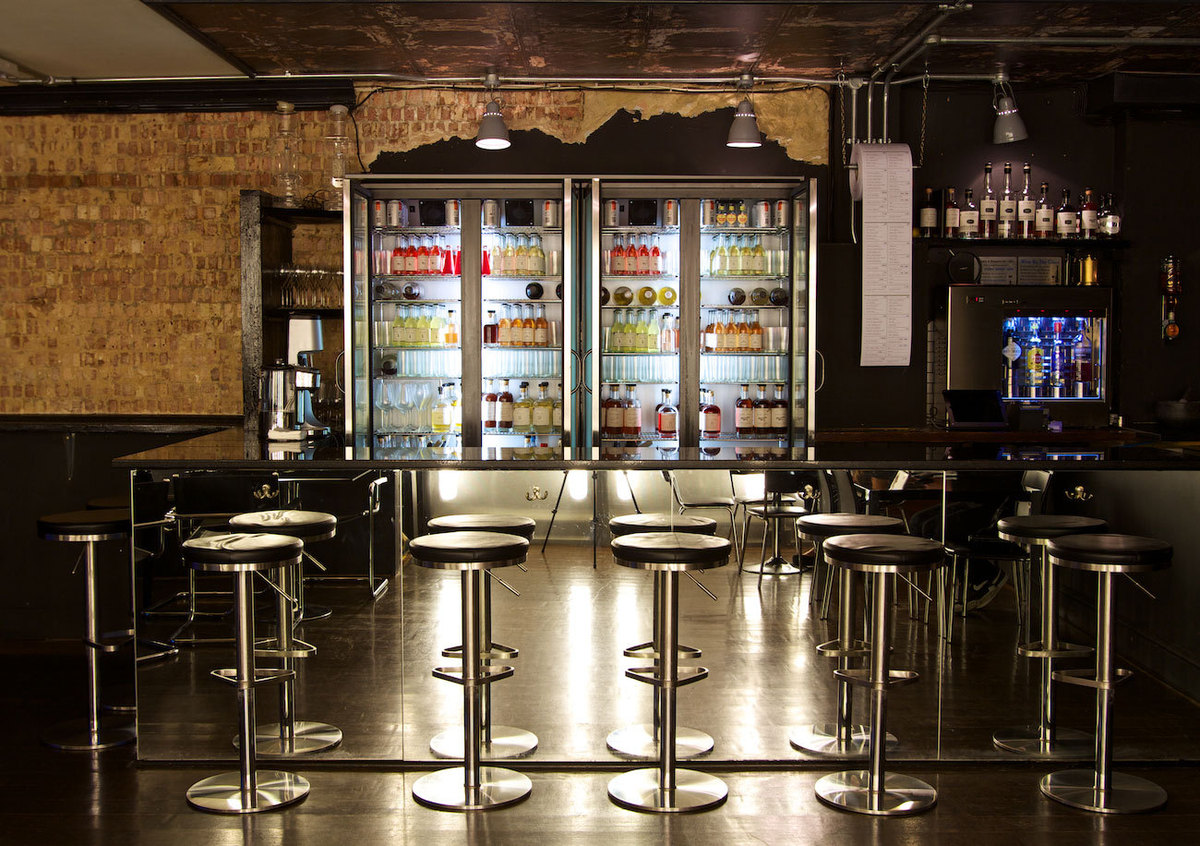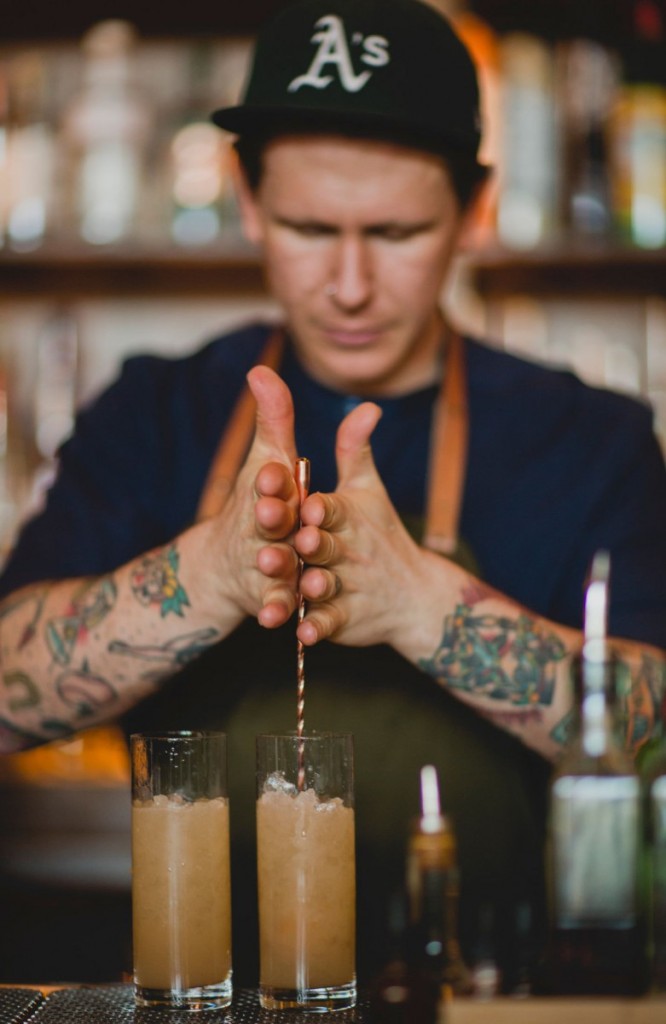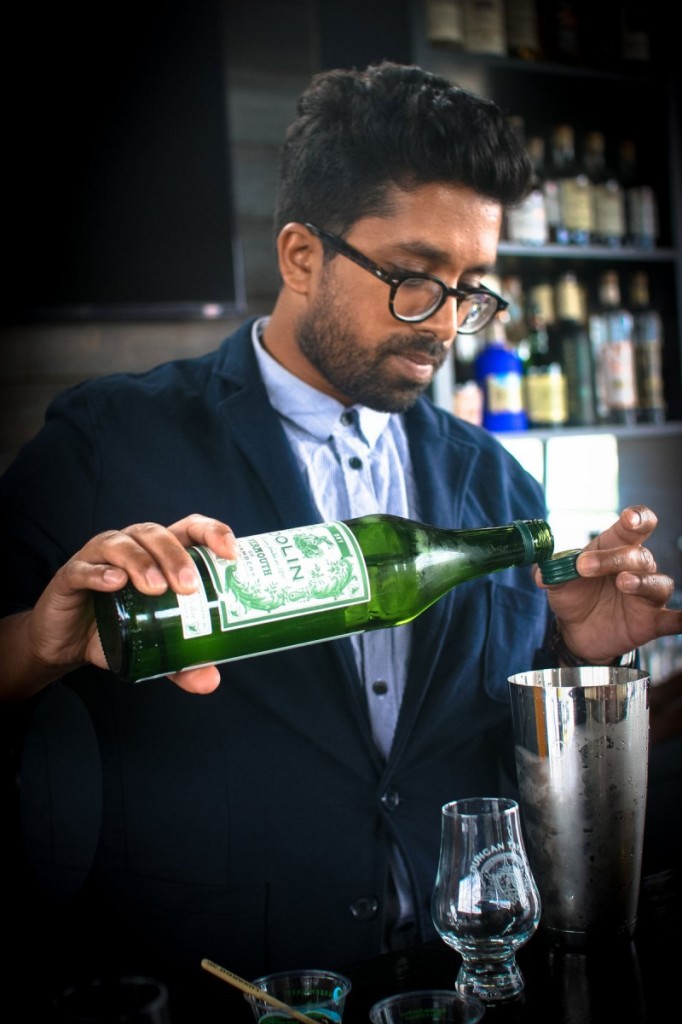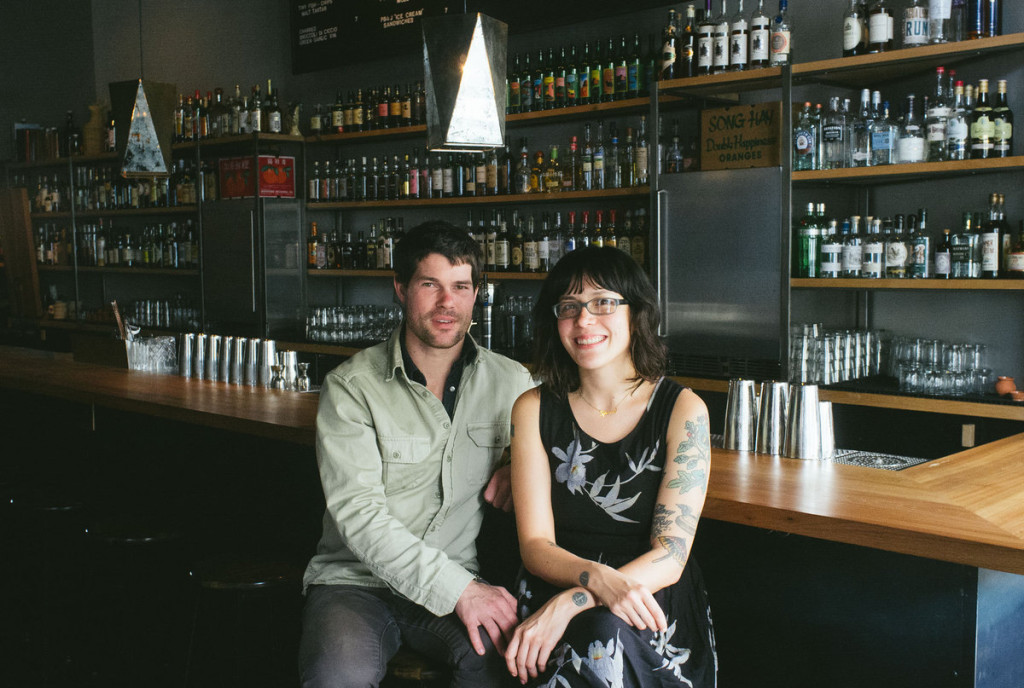
#267
ZERO IS HERO
26 Nov 2015 By David Fuhrmann-Lim
Straws, mint stems, ice, peels and coasters all end up as garbage – is it possible to have a sustainable “zero waste” bar? A few watering holes are attempting eco-responsibility to reduce waste and save money. (It means no more little umbrellas!)
By Kara Newman
Behind the bar at New York’s The Daily, Iain Griffiths whipped up a “Green” Sour in a blender: Ford’s Gin, a coin of fresh cucumber, a whole egg, orange bitters, sea salt, raspberries, crushed ice, and a lemon half, with the peel already removed. There was nothing left over but a single egg shell.
Presenting the (almost) zero-waste cocktail.
No additional ice was dumped in the sink. The lemon peels were set aside as garnish and flavor fodder for simple syrups. Even the gin bottle had been manufactured for reuse; its labels peel off easily and measuring cup-like markings are etched into the glass.
Now to get everyone to take a sip.

Griffiths mixing a drink on his sustainable bar whistle-stop tour. Source: 86 Company
Eco Road Show
The typical cocktail bar is a trash machine. Notwithstanding plenty of eco talk circulating among breweries, wineries, and distilleries, the dialogue has so far bypassed the consumption side.
To rectify this, Griffiths teamed up in October with Simon Ford of liquor producer 86 for a whistle-stop tour of some U.S. cities, including Austin, Dallas, Los Angeles, and Chicago, concluding in New York. The topic: How to create a sustainable bar.
“Sustainability is unsexy. It’s a challenge,” acknowledged Griffiths, speaking to a group of bartenders as they sipped his blended sour. This is an industry that thrives on late nights and bad habits, not restraint and long-term planning, to sell alcohol.
His pitch: Atruism is certainly great, but reducing costs related to water, energy, and raw ingredients “actually earns you money in the long term.”
 London-based Chetiyawardana has made a name for himself with innovative bars focused on environmental sustainability. Source: White Lyan
London-based Chetiyawardana has made a name for himself with innovative bars focused on environmental sustainability. Source: White Lyan
In Practice
The template exists at London’s award-winning White Lyan, where Griffiths works as business development manager with owner Ryan Chetiyawardana, who has made a name for himself with innovative bars that focus on environmental sustainability. (Chetiyawardana was named International Bartender of the Year 2015.)
Last year, during a speech at booze industry trade show Tales of the Cocktail, Chetiyawardana pegged the “bags and bags of lemons” he saw thrown away when he worked at other bars as his inspiration to go greener. “It was a shame to me,” he said. “Citrus is expensive. It comes from all these countries. You squeeze the lemon juice out and then throw it away in the bin.”
At White Lyan, Chetiyawardana famously uses no ice, favoring pre-chilled drinks and glasses, or citrus, preferring to create a citric acid he likens to “a turbocharged lemon on crack.” Disdaining the hefty carbon footprint that comes with imported spirits and the excess packaging needed to cushion glass bottles, he goes so far as to make in-house spirits. (A distilling license is easier for a bar to obtain in the U.K. than in the U.S.)
In a week, White Lyan throws away a single bag of garbage.
 Tin Roof Drink Company’s Arnholt (left) and Claire Sprouse, consultants with a cause. Source: Tin Roof Drink Company
Tin Roof Drink Company’s Arnholt (left) and Claire Sprouse, consultants with a cause. Source: Tin Roof Drink Company
Foodies First
That’s an extreme example, to be sure, but it’s one that Chad Arnholt, co-founder and partner at San Francisco-based consulting firm Tin Roof Drink Community, believes can take root in the U.S. Arnholt spent the past year working with soon-to-open San Francisco restaurant The Perennial to create a “full-service, low-impact bar.”
It is in the restaurant sector, where owners confront slim margins and plenty of perishables, that U.S. bars seem readiest to move toward greater sustainability. Such high-profile chef stunts as Dan Barber’s WastED in New York (which included the sale in March of a special “veggie pulp” burger at Shake Shack) help focus attention.
Arnholt’s challenge: Reduce water waste; conserve energy related to heating and refrigeration; identify such ingredients as produce and spirits that can be responsibly produced and transported; and minimize ingredient waste. Above all else, maintain cocktail quality and healthy profit margins.
“Bars aren’t inherently green, ‘clean,’ or sustainable,” Arnholt said, speaking at Portland Cocktail Week. “The drain water from the World’s 50 Best Bars could fill an Olympic-size swimming pool in one year.”
Bars emphasize speed. Eco is often taken as synonymous with “slow.” Finding ways to balance “deliciousness” with sustainability, he continued, “is the modern hospitality challenge.”
How Drinks May Change
Among the changes sustainability might bring to cocktail bars:
More premixed cocktails in bottles and on tap; fewer drinks shaken with ice. Reduced use of ice will be the most visible change. A stirred or shaken drink often uses two sets: the first, in a cocktail shaker or mixing glass, to chill and dilute; the second strained over fresh rocks, for presentation purposes. (Straight-up cocktails excepted.) Each drink made this way consumes up to a 4 pounds of ice, or 2 liters of water, Arnholt estimates.
Pre-batched drinks can be made ahead of time, pre-diluted and stored at a cool temperature, and then served bottle-service style, or pulled from a tap. A smaller change we might see even sooner: Old Fashioneds and other spirit-forward drinks stirred over a large piece of ice—instead of shaken and then strained over that big, decorative cube.
Read the rest at Bloomberg Pursuits
Like this? Find out what FAIR. is doing to promote sustainability

You might be interested in...
DRINK SMART
Across the Island, SmarkKiosk Allows You to Refill Your Favourite Spirits So You Can Drink Sustainably.
VODKA = VODCO2
Air Co Just Launched a Carbon-Negative Vodka Made From CO2. You Oughta Try It, We Did.
DRINK SMART
VODKA = VODCO2